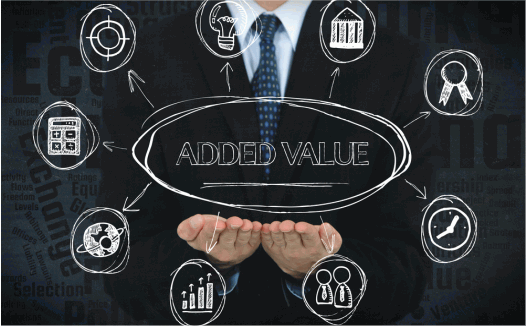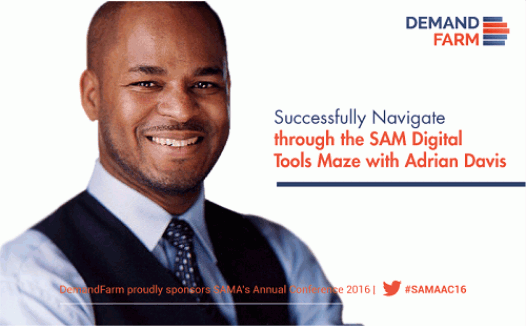When Sellers Become Trusted Advisors!

Frederick Reichheld of Bain & Company researched on prescription for cutting costs and discovered that increasing customer retention rates by as little as 5% can reflect an increase in profits by 25% to 95%. Traditional sales enablement involved ‘enabling’ sales teams with the right information at the right time to make the right selling decisions to important prospects. In the post-pandemic era, Sales Enablement when it comes to Key Account Management is a continuous process stretching from discovery to customer retention. With a large number of buyer interactions happening digitally and taking place much before they reach out to salespeople, how does one ensure customer retention? Within Key Account Management practice, what does sales enablement look like? Michael McCarthy, Senior Business & Technology Consultant, Sales Enablement Duke Energy, had a lot to share on this topic in ‘The Changing Role of Technology in Key Account Management’ webinar featuring Forrester. Don’t Build a Long-term Relationship on Short-term Thinking The separation of Opportunity Management and Account Management is now more delineated than it used to be. For account management to successfully work, the team has to become a trusted advisor to the buyer within that organization. If that sort of interconnected relationship is not built between the sales team and the buyer organization, then a “won and done” relationship forms. There is only ‘short-term thinking’ when it comes to opportunity management. However, customer retention requires long-term planning which forms the basis of account management. From a Sales Enablement perspective in Key Account Management practice, Michael McCarthy had the following to say. “Sales enablement is being pulled and pushed more and more to deliver influence for the sellers that they can use to become that trusted advisor. And in order for us to be successful at that, we need to be able to very quickly create Insight that the seller can provide at the account level that the the buyers within the account can then use to make decisions.” If accurate, good, intelligent Insight is not provided for Key Account Management activities, then one cannot become a trusted advisor. Subsequently, teams also miss out on the ability to grow revenue substantially within a Key Account Management practice. What are some of the factors that go into having good insight? Leadership-Driven Change Management Salespeople often rely on being agile and it might feel a bit restrictive to have the concept of a ‘process’. Thus a transition to automated, data-driven sales processes will have a pushback from salespeople. Standardizing sales enablement processes within key account management requires change management. Within sales enablement teams, salespeople need to grow to become more data savvy to be able to provide data-driven sales processes. Data is not useful merely because of its availability, but in how the data is being used to position the team as a trusted advisor to the buyer. “They need to be able to push through data and pick data. That is going to help them in the customer’s eyes and not get overwhelmed by too much data,” says Michael McCarthy. Penny for Your Thoughts: Is Your Data Conversational? Another issue facing sales enablement is that the data needs to be conversational. An issue with the data available now is that it is centered around reporting, and it is not necessarily conversational. Sellers are often faced with this issue where if they go in with data to the buyer it looks like a piece of reporting numbers. Making sure that data presented can drive conversation is something that needs to be accomplished. CRMs are Just a Starting Point When data is automated, the ability to consolidate data into one of the very few places becomes important. This will prevent the formation of information silos and salespeople will have ready, easy access to consolidated data to support them. While CRMs are a good starting point for it, some data providers don’t integrate very well into your CRM. Besides, while CRMs provide a space for data aggregation, to ensure your sales is data-driven you have to extend further. Don’t Let Your Data Go To Waste A major issue is that a lot of times, sales leaders use PowerPoint presentations or they allow sellers to bring PowerPoint Presentations into a business review. They never open the CRM or piece together data that is put into an Insight-driven dashboard. To fully utilize the abundance of data available these days, sales leaders need to upgrade how they present in business reviews. Every Michael Jordan Needs a Scottie Pippen A point to note in existing sales processes is that often there is no data that is customer journey or buyer journey focused. In the middle of a customer journey, the seller is instinctively in a defensive mode. Getting the seller to move off of defense and bringing back a conversation should be on the agenda. A pivotal focus of Sales Enablement within the Key Account Management space is that the sellers need an assist in making that data conversational. This is difficult to achieve and requires years of practice. However, with advancing digital tools and technology, the gap reduces. For Michael McCarthy, we are moving in the right direction for this through digital transition in Key Account Management and over time with more prototyping, it can become more successful.
Value Selling – as the First Step to Key Account Management

Needless to say that the first step to Key Account Management is Value Selling. Key/Strategic Account Management is incomplete without it. Value selling, however, exotic the term may sound, is a basic step to elevating your most important and critical accounts to the stature of Key Accounts. Most organizations are adept at using the STP (Segmenting, Targeting, Positioning) principle to differentiate their offerings in the market, vis-a-vis their target audience. But they still stand a big risk of losing the fine line of differentiation to their competitors who are eager to kill their first-mover advantage in no time at all. The truth of the marketplace which resembles a war zone at all times is that competitors are fast to move in and duplicate your hitherto unique positioning or offering. This makes your USP a commodity over time and this holds for most products and services over time. As per buyer perception research (Corporate Executive Board Research), out of the 100 times that sellers do a unique pitch and call their products unique, 86 of these times, buyers do not find anything unique about it; neither do they find anything compelling enough; in fact, the universal feeling is that the features are more or less the same as offered by other sellers of the same category of products. The truth is that organizations should see their products from the customer’s perception and not inside-out. You need to understand certain basics of Value Selling. The first rule of Value Selling is that prospects and customers need to like and trust you, the seller, first. If they do, then comes the next challenge – they seek the best value and the lowest risk. The eternally and arguable lopsided customer expectation of getting the best product at the lowest price is truth. That is what customers expect. They buy the product that fits these expectations the best. That means that they are willing to pay a certain price for a certain value. The universal truth about customers is that – Value and Risk are defined by the customer and not you, the seller. Thus, every salesperson needs to be well equipped and prepared to discuss tangible business cases, deliver desired outcomes to customers and manage risks while embracing value selling to accelerate sales. The organization should enable its sales force to deliver value to its customers ably and easily with the right sales enablement framework. For the products and services that are more like commodities, organizations need to get into automation to ensure smooth delivery to buyers in little time, perfect pricing and a great deal of standardization. In such cases, getting in a salesperson may not be a good idea at all. However, for products that are high-involvement and one-time purchases, and products and on which there is a lot riding, as seen from the customer’s point of view, these products need to be handled with a lot of TLC by the sales force. This is where Value Selling needs to come in. The salesperson who is the front end for such products needs to be well trained in the principles of Value Selling. Here, the organization needs to support them in training so they acquire a strong business acumen, key domain knowledge, and powerful insights to enable them to sell the right way and make a strong case in the organization’s favor. They need to be good at handling senior-level talks which are key to value selling. The salesperson needs to have the right kind of maturity in selling these value products. To recap, every organization needs to have product differentiation and understand the sales enablement, they need to have for every product category. Automation for the lower hanging fruit, the low-involvement products where buying is a matter of habit for the buyer; and for the high-involvement products, a different kind of sales enablement with training in the right skills, to enable the sales force to value-sell. Value selling is an art and once acquired can lead to the acquisition of key accounts for the organization and hence should be the first step in Institutionalize Key Account Management processes and methodology. However, without the right sales enablement framework, this is more likely to remain a distant dream. Explore our blog on cross-selling up-selling in which we’ve elaborated how it can be used to grow business in 2021.
Demand Farming – Co-creating Customer Value

Many organizations are late in waking up to the value of a Strategic Account Management program. If you were to look at trends in the lead to deal funnel, Account Managers are predominantly talking about how data is not easily accessible or is not leveraged fully or effectively, there is a sustainability challenge in the process and therefore the results; how a formal Key Account Management process will boost results and how a software platform derived from best practices of KAM will help them. Reproducing here, some trends from DemandFarm Inc.’s report on ‘The Hype & Art of KAM’. Industry reports state that about 60% of organizations lose deals because competitors establish a better relationship with the customer. 50% of companies use the attribute “strategic fit” to select their key accounts, followed by 27% using “past/current revenue” for key/strategic account selection. 8 % of respondents identified access to customer executives and decision-makers as the main KAM challenge. 60% of respondents from best-in-class enterprises feel that their biggest KAM challenge is the balancing of short-term sales goals with long-term CRM goals. 2% of organizations still do not have a formal key account management process. 50% of respondents say data about key accounts in their organization is fragmented and not easily accessible. 83% of respondents believe that KAM planning and strategizing will receive a huge boost, with the adoption of a KAM software platform. 60% of respondents feel a software platform derived from KAM best practices would be useful to them. 28% of respondents feel a built-in account planning process would significantly aid them in planning and optimizing revenue from key accounts. To address these challenges, it is important to learn about the different stages of the enterprise lifecycle, how clients and providers view their relationships, what a good client relationship is about as well as how it can impact your results. While doing this, it is integral to adopt one of the two processes – transactional or transformational. Sitting on the fence between the two could prove to be a hindrance in creating and maintaining a happy account. The presenter, Adrian Davis, President, Whetstone Inc. also takes you through the above, as well as Winner’s Quadrant, the Knowledge Funnel, and other important things. He also helps you discover and discuss effective features of SAM software such as Account Whitespace Analysis, Organization Chart with Heat Map Analysis that could tilt the scales in your favor. The session happens now at SAMA’s Annual Conference 2016. Here’s to customer value! To learn more, join the session by Adrian Davis at #SAMAAC16‘.